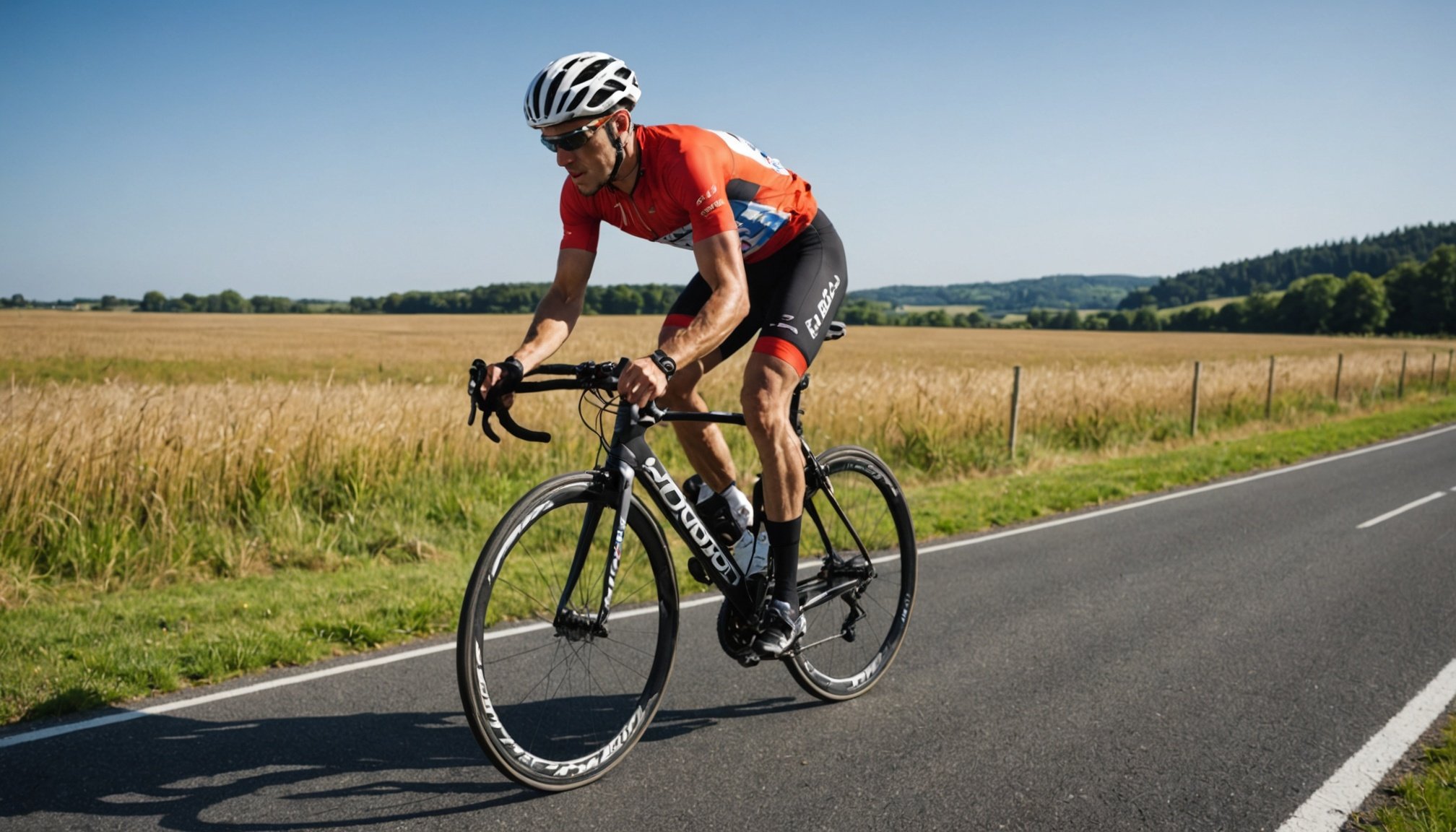Cycling is a fantastic way to stay fit and enjoy the outdoors. However, if you want to take your performance to the next level, cross-training is a key component of any serious cyclist’s training regimen. Cross-training involves engaging in different physical activities that complement your primary sport—in this case, cycling. This approach not only helps improve your cycling performance but also enhances overall fitness, reduces injury risk, and keeps training exciting. In this article, we will explore effective cross-training strategies that can significantly boost your cycling performance.
Understanding the Benefits of Cross-Training
Cross-training offers a multitude of benefits for cyclists looking to enhance their performance. First and foremost, it helps develop muscle strength in areas that cycling alone may not effectively target. For instance, cycling predominantly uses the lower body muscles, which can lead to imbalances over time. By incorporating cross-training activities, you can strengthen your upper body and core, leading to a more balanced physique and improved cycling efficiency.
Also to read : What are the best practices for cycling safely with children in the UK?
Additionally, cross-training can be a powerful tool for injury prevention. Repetitive motions in cycling can cause overuse injuries, particularly in the knees and lower back. By engaging in various activities, you allow the muscles and joints used in cycling to rest and recover, reducing the risk of injuries. Activities such as swimming or rowing can provide a full-body workout while giving your legs a break from the continuous strain of cycling.
Moreover, cross-training can improve your cardiovascular fitness. Different forms of aerobic exercise, such as running or hiking, can elevate your heart rate in varied ways compared to cycling. This diversity in cardiovascular workouts can lead to improved heart health and increased aerobic capacity, which is crucial for endurance cycling.
Have you seen this : How can I strategically use interval training to improve my cycling performance in the UK?
Lastly, cross-training keeps your workouts fresh and engaging. It can be easy to lose motivation if you’re doing the same routine repeatedly. With cross-training, you can keep your workouts interesting, which can lead to better adherence to your training program. This variety not only enhances fitness but also contributes to a more enjoyable cycling journey.
Effective Cross-Training Activities for Cyclists
When considering which cross-training activities to incorporate into your routine, it’s essential to choose those that complement your cycling workouts effectively. One of the most beneficial forms of cross-training for cyclists is swimming. This low-impact exercise is excellent for building endurance while allowing your joints to recover from the stress of cycling. Swimming engages your entire body and can improve your lung capacity and breathing techniques, which are critical for cycling performance.
Another outstanding option is strength training. Incorporating resistance training into your routine can enhance your power on the bike. Focus on exercises that target your hamstrings, quadriceps, glutes, and core. Deadlifts, squats, lunges, and planks are excellent choices that will not only build strength but also improve your cycling stability. Aim for two strength training sessions a week, ensuring you allow adequate recovery between sessions.
Yoga is another fantastic activity to consider. Practicing yoga can improve your flexibility and core strength, both of which are vital for cyclists. Increased flexibility reduces the risk of injuries and improves your pedaling efficiency. Additionally, yoga can enhance your mental focus and relaxation, which are crucial during long rides or races.
If you prefer a more dynamic approach, try team sports such as soccer or basketball. These activities can improve your agility, speed, and coordination—all essential skills for cyclists. Moreover, the social aspect of team sports can add an element of fun to your training, helping maintain your motivation.
Lastly, consider trail running. This activity offers the benefits of cardiovascular training while mimicking the outdoor conditions of cycling. Running on varying terrains can help build muscle strength and endurance, contributing to improved cycling performance.
Creating a Balanced Cross-Training Schedule
To maximize the benefits of cross-training, you’ll need to create a balanced schedule that complements your cycling training. Start by determining how many days a week you cycle and your training goals. For example, if you cycle five days a week, consider incorporating cross-training activities on your rest days or lighter cycling days.
It’s crucial to maintain a balance between cycling and cross-training. A common approach is to allocate two to three days a week for cross-training. For instance, you might cycle on Mondays, Wednesdays, and Saturdays, while incorporating swimming on Tuesdays and strength training on Thursdays. This schedule allows your body to recover while still challenging it in different ways.
When scheduling your workouts, ensure that your cross-training sessions are not overly strenuous, as this could lead to fatigue and diminish your cycling performance. Allow for recovery time between intense training sessions, and listen to your body. If you feel fatigued or notice signs of overtraining, it may be beneficial to reduce the intensity of cross-training activities or add extra rest days.
It’s also essential to vary the types of cross-training activities you engage in throughout the week. This variety will keep your workouts interesting and prevent burnout. Mixing up your activities can also help target different muscle groups and energy systems, leading to a well-rounded fitness level.
Lastly, consider tracking your progress. Monitoring how your cross-training affects your cycling performance can help you make necessary adjustments to your training plan. Keeping a training journal or using fitness apps can provide valuable insights into what works best for you.
Nutrition and Recovery for Enhanced Performance
Cross-training is only one part of the equation when it comes to boosting your cycling performance. Proper nutrition and recovery are equally crucial components of your training regimen. As you increase the intensity and frequency of your workouts, your body requires the right fuel to perform at its best.
Ensure you are consuming a balanced diet rich in carbohydrates, proteins, and healthy fats. Carbohydrates are vital for replenishing glycogen stores used during your workouts, while proteins play a crucial role in muscle repair and growth. Incorporate a variety of whole foods such as fruits, vegetables, lean proteins, and whole grains into your diet. Remember to hydrate adequately, as proper hydration is essential for optimal performance.
Post-workout nutrition is also critical. After intense training sessions, aim to consume a meal or snack within 30 minutes that includes both protein and carbohydrates. This can help accelerate muscle recovery and replenish your energy stores—think of a smoothie with protein powder and fruit or a turkey sandwich on whole-grain bread.
In addition to nutrition, prioritize recovery in your training plan. Recovery allows your body to repair and strengthen itself after rigorous workouts. Techniques such as foam rolling, stretching, and adequate sleep will play a significant role in your overall performance. Incorporate rest days into your weekly routine to allow for recovery, and consider engaging in active recovery activities, such as light yoga or walking, to promote blood flow and reduce soreness.
In conclusion, effective cross-training is a powerful strategy for cyclists wanting to enhance their performance. By diversifying your training regimen with activities like swimming, strength training, and yoga, you’ll develop a more balanced fitness level that reduces injury risk and improves overall cycling efficiency. Establishing a balanced cross-training schedule, prioritizing nutrition, and allowing for proper recovery will further boost your performance on the bike. Remember that the journey is just as important as the destination; keep your training engaging and enjoyable as you work towards your cycling goals. With determination and the right approach, you will undoubtedly notice significant improvements in your cycling performance.











